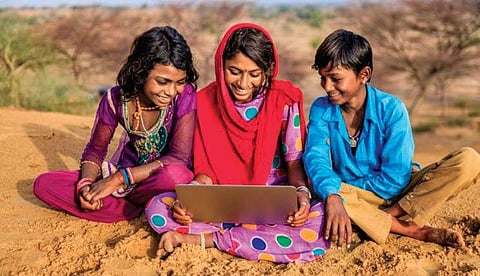

Modi’s phenomenal rise within his own party and in the national politics could be attributed to many factors, but the most prominent among these would be ‘unrest among India’s top one per cent wealthy businessmen’ with the state’s sustained capability to control business and resources,” the recent book titled India Now and in Transition says about the BJP’s victory in the 2014 General Elections.
Whether one agrees with the description or not, it is indeed a bold analysis of the change in the government that seems to be a watershed moment in the country’s 70 years of history since it attained independence.
Edited by Atul K Thakur, a public policy professional and a specialist on the interface of politics and economics, the volume takes the reader through a wide gamut of issues covering areas of politics and governance, economics and development, security and foreign policy, society and culture and language along with literature.
It is a collection of 37 essays by eminent thinkers, experts and leading authors of diverse issues and subjects. The book offers a unique insight into the multi-level processes that are shaping today’s India to take it to future.
There has always been an intriguing curiosity about India both within its borders as well as outside and it has been growing as it gains traction in global affairs. India has been changing very fast yet it continues to hold on to the past.
Being one of the few countries in the world that have been registering positive economic growth
for the last 25 years, the urge to know about India’s present and future profile is particularly high.
While the present is visible to comprehend somewhat, the future is constrained by multifarious challenges that confront the country. It is here that the volume guides the reader to draw some conclusions.
With analysis of the past and taking the present under a critical loop, authors have tried to make an intelligent guess of the journey to the future by making an honest probe into emerging trends and possibly trajectories that the country of 1.2 billion is likely to take.
The book helps in understanding the ‘Idea of India’ that was conceived and nurtured during the freedom struggle and given concrete shape in years after Independence in 1947 and the challenges that it faces today. Also, it talks about the changes that are being sought to be introduced after coming into the power of the BJP-led National Democratic Alliance government of Prime Minister Narendra Modi.
In his incisive article, historian Ramchandra Guha refers to efforts to present the country’s first Prime Minister Jawaharlal Nehru and his colleague Home Minister Vallabh Bhai Patel as rivals who indeed were “collaborators and colleagues”.
Article on Kashmir by Wajahat Habibullah is an honest description of the challenges that confront the nation today. Rajiv Bhattacharya’s ‘What Ails the Northeast’ is a detailed account of the challenges and opportunities that exist today.
Thakur, in his piece “The ‘Real Other’ of the World’s Largest Democracy”, presents a picture of the present saying that the 2014 General Elections decisively established a new political culture that for functional normalcy juggled between the ‘medieval parochialism’ and ‘marketisation of critical resources.”
Over 400 pages make an interesting read though some subjects like the virtual world of cyber technologies and issues related to security challenges from it
are missing.
Like in almost every edited book, quality of essays and treatment of issues by respective authors vary from one to the other. Some are brilliant; a few are good while rest of them are average.